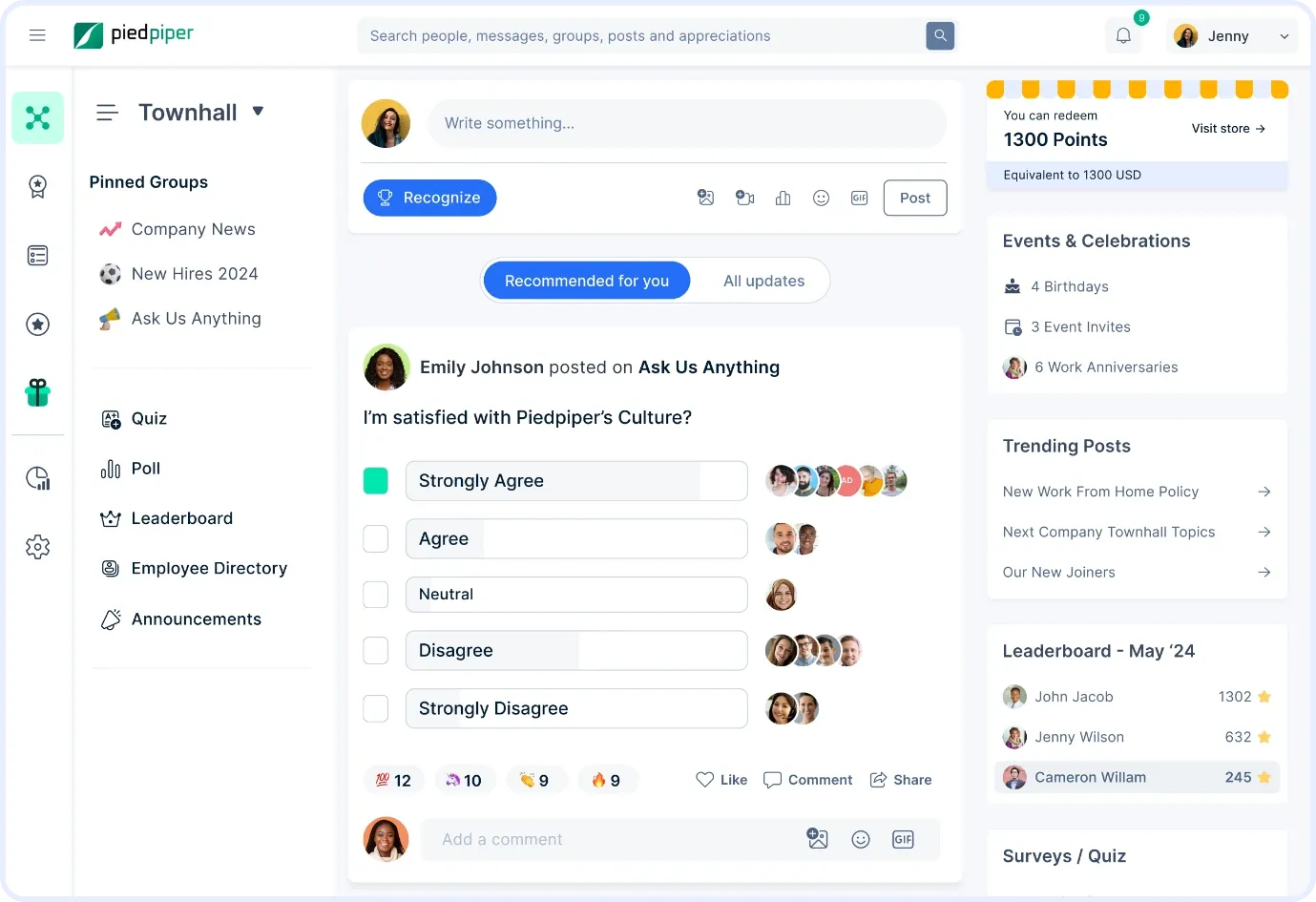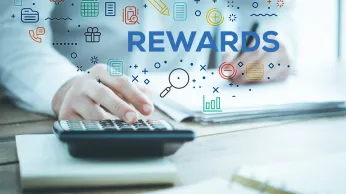10 Smart Time Management Hacks for Busy Professionals to Boost Productivity
Master your workday with these 10 expert-backed time management hacks. Learn how to stay productive, organized, and stress-free in a busy professional world.
En esta página
- What is time management and why is it crucial in today’s workplace?
- Why do professionals struggle with managing time?
- When should you start practicing better time management?
- 10 trucos de gestión del tiempo para mejorar la productividad de los empleados
- Who can benefit from these time management hacks?
- How Empuls helps improve time management at work
- Conclusión
El tiempo es un recurso precioso para todos los profesionales. Muchos se sienten identificados con el deseo de disponer de más de las 24 horas diarias habituales, pero el tiempo sigue siendo escurridizo y se escapa implacablemente.
Modern-day professionals face significant time management challenges, especially with the rise of remote work. Surprisingly, research suggests that 82% of working professionals lack an effective time management system. This not only amplifies workplace stress but also spills over into their personal life, leaving individuals feeling overwhelmed.
The issue of time management is not solely an individual concern; it pervades workplaces everywhere. Studies reveal that the average corporate employee spends 51% of their workday on tasks with little to no value.
Employees may be wasting time gossiping with their co-workers or attending workplace celebrations in the physical workplace. On the other hand, in a remote setup, they may be wasting working hours unproductively scrolling on social media.
Given this reality, promoting modern time management practices is imperative in today's workplace. In this blog, we'll explore 10 essential time management hacks to rescue busy professionals and empower them to optimize their time for maximum productivity.
What is time management and why is it crucial in today’s workplace?
Time management is the art of planning, organizing, and executing tasks efficiently to make the most of the limited hours in a day. In today’s digital-first, hybrid work environment, professionals often find themselves struggling to stay focused and productive.
- AI-led nudges to promote healthy time usage
- Employee surveys to identify time-related stress triggers
- Recognition and rewards for efficient and impactful work
Why do professionals struggle with managing time?
Many professionals fall into time traps without realizing it:
- Lack of structure and pre-planning
- Distractions from notifications, meetings, or social media
- Inability to prioritize important tasks
- Perfectionism and procrastination
- Poor sleep or energy management
The modern workplace, whether physical or virtual, is full of interruptions. Recognizing these pitfalls is the first step to overcoming them.
When should you start practicing better time management?
Now. There’s no better time to improve time management than today.
Whether you're feeling overwhelmed, missing deadlines, or just want to improve your focus, starting applying the time management hacks immediately can bring tangible benefits like:
- Aumento de la productividad
- Improved work-life balance
- Reducción del estrés y el agotamiento
- Better decision-making and focus
Even small tweaks like tracking your day or creating a to-do list can yield major improvements in just a week.
10 trucos de gestión del tiempo para mejorar la productividad de los empleados
He aquí 10 trucos de gestión del tiempo para mejorar la productividad de los empleados:
1. Realizar una auditoría del tiempo empleado
Para optimizar su tiempo y mejorar la productividad, primero tiene que identificar cómo emplea su tiempo actualmente. Para ello puede ser útil una auditoría del tiempo invertido.
Debe realizar un seguimiento diligente de cómo emplea su tiempo durante la jornada laboral media. Una auditoría del tiempo empleado puede ayudarle a determinarlo:
- Qué tareas es factible realizar en un día,
- Identifique las actividades que proporcionan el mayor rendimiento a sus esfuerzos y
- Detecta las actividades o periodos de tiempo en los que podrías ser más productivo.
He aquí algunos pasos que le ayudarán a realizar correctamente su auditoría de gasto de tiempo:
- Registre todas las actividades que realiza durante la jornada laboral y cuánto tiempo le lleva cada tarea
- Vigile de cerca sus niveles de energía durante el día.
- Evalúe su energía, estado de ánimo, motivación y concentración cada hora en una escala del 1 al 10.
- Evita los estimulantes externos, como la cafeína, siempre que puedas.
Debes realizar este ejercicio todos los días durante una semana.
Hacer esto le ayudará rápidamente a darse cuenta de cuánto tiempo dedica a actividades inútiles. También tendrás una idea más precisa de cuánto tiempo te llevan las distintas tareas e identificarás tus horas de máxima productividad. Y, alineando las tareas exigentes con estas horas punta, podrás maximizar la eficiencia y cumplir los plazos con eficacia.
2. Crear un horario diario con antelación
Reconozcámoslo. Todos somos culpables de perder el tiempo en cosas que realmente no aportan valor. Pero, ¿te has preguntado alguna vez por qué ocurre? Es porque no tienes un plan o un calendario fijo.
Una agenda diaria con una lista de tareas organizada puede resolver este problema. Programar las cosas con antelación puede orientar tu forma de abordarlas e incluso ayudarte a bloquear el tiempo. Te sentirás menos ansioso y tendrás una idea clara de lo que te espera.
Para crear un programa diario:
- Dedica entre 15 y 20 minutos antes de empezar la jornada laboral a escribir tus objetivos diarios.
- Use the Pareto 80:20 principle to understand which activities to prioritize. As explained by Brian Tracy, the Pareto principle states that “20 percent of your activities will account for 80 percent of your results."
- Set deadlines for your goals while keeping Parkinson’s Law in mind. This rule states that "work expands to fill the time available for completion." This means that if you set a task deadline strictly rather than liberally, you can still complete it while saving time.
- Follow Eisenhower's Matrix model to boost productivity by categorizing tasks as urgent and important (do immediately), important but not urgent (schedule), urgent but not important (delegate), or neither (eliminate). This method enhances focus on key goals, improving time management and output.
3. Bloqueo temporal y agrupación de tareas similares
El bloqueo temporal es una poderosa herramienta de productividad que consiste en asignar tiempos específicos a distintas tareas a lo largo de la jornada laboral. Este método ayuda a reducir las distracciones y a mantener la atención en las prioridades clave.
Reservar momentos concretos para las actividades favorece una gestión eficaz del tiempo y garantiza que las tareas esenciales se lleven a cabo con eficacia, evitando la sensación de agobio por exigencias contradictorias.
He aquí una de las técnicas eficaces para bloquear el tiempo:
- Pomodoro technique: A prominent time-blocking technique is the Pomodoro technique, developed in the 1980s. It advocates for concentrated work in 25-minute intervals followed by a 5-minute break. This cycle helps to reduce mental fatigue and maintain high motivation by balancing focused work with regular short breaks. After several Pomodoro cycles, a longer 15-minute break is recommended. You can easily access this pomodoro feature available in almost all time tracker apps.
Alternativamente, también puede optar por el buzón de tiempo personalizado para establecer su propio ritmo para las tareas. Al estimar el tiempo que puede llevar cada tarea, le dedicas una cantidad específica de tiempo antes de pasar a la siguiente prioridad, tanto si la tarea se ha completado como si no. Este enfoque ayuda a respetar los límites de tiempo autoimpuestos y a gestionar la carga de trabajo del día de forma más realista.
El bloqueo del tiempo también evita las distracciones de las nuevas tareas que surgen a lo largo del día. Programando franjas horarias específicas para actividades rutinarias como archivar, llamar por teléfono y responder correos electrónicos, puedes evitar la tentación de consultar notificaciones en momentos inadecuados. Esto es especialmente útil durante los periodos de trabajo intenso, en los que la concentración es crucial.
4. Automatizar o delegar tareas
Priorizar determinadas tareas hará que sea más fácil saber si alguna de ellas puede automatizarse o delegarse. Esto puede ser especialmente útil si trabajas en un puesto directivo.
Many managers unconsciously get into the habit of micro-managing in the workplace, and that is a waste of time for both parties. When you conduct a time audit and follow it up by creating an organized to-do list, you can identify such time-suckers and scale back on tasks that are not a priority for someone in your position.
You can automate non-priority tasks (using tools) or delegate them to another employee, team member, or even a virtual assistant! For example, sending sales emails that mostly read the same can be tedious and consume a lot of time for a sales manager. In such a scenario, they can either automate it using a CRM or email marketing automation software or delegate the task to a junior employee or a freelancer.
5. Identificar los desencadenantes de la procrastinación
About 20% of adults are chronic procrastinators, often due to a hyper-focus on perfectionism. Professionals often set high standards for themselves, ultimately leading to them not performing an activity altogether.
How to battle this? The first step is to begin the task without overthinking it too much and breaking the mental barrier to progress. You can use tools like a text to speech reader to process information more efficiently, aiding in task initiation and focus.
Además de esto, hay distracciones. He aquí algunas distracciones habituales en el lugar de trabajo y las mejores formas de mitigarlas:
- Social media: Limit access using website blockers or designate specific break times for social media.
- Meetings: Have clear agendas, limit duration, or use brief stand-up meetings.
- Noisy environments: Use noise-canceling headphones, find quiet spaces, or work during less busy times.
- Constant notifications: Modify notification settings, turn off non-essential alerts, and schedule specific times to check messages.
Para limitar las distracciones, lo mejor es empezar con pasos de bebé. Durante dos semanas, identifique las dos distracciones que le resulten más difíciles de superar. Además, una dieta sana, dormir lo suficiente e hidratarse son cruciales para mantener la concentración, especialmente cuando llega el bajón vespertino.
6. Utilizar la tecnología para agilizar la jornada laboral
Technology is essential to time management because it offers tools and apps that increase productivity, automate repetitive tasks, and allocate time to real priorities.
Based on your needs, here’s a quick recommendation table:
Need | Recommended Tool/Method |
Task Management | Todoist, Asana |
Time Tracking | Time Doctor, RescueTime |
Focus & Deep Work | Forest, Pomodoro Technique |
Team Communication | Slack |
Mindfulness | Espacio para la cabeza |
Automation | Zapier, Email Templates, CRMs |
7. Tómate suficientes descansos para reponer fuerzas
While taking a break may sound counterintuitive, studies show that the most productive workers focus on tasks for 52 minutes, followed by a 17-minute break. This quarter-hour window is often called productivity’s “golden hour.”
It lasts just long enough for your mind to switch off to feel rejuvenated, but not so long that you become distracted and lose track of what you are doing.
Frequent breaks improve memory, decision-making, mental health, and productivity, while skipping them can increase stress and hasten burnout. However, using these breaks for merely perusing social media or binge-watching OTT channels is not helpful.
During these windows, you should move your body—stand up from your chair, stretch, reach for a bottle of water, etc. You could also perform smaller jobs that take less than two minutes to complete during these intervals.
To ensure a good sleeping pattern, investing in a quality mattress can be beneficial. You should also:
- Establezca un horario regular para acostarse y asegúrese de dormir al menos 8 horas.
- Evita utilizar un dispositivo inteligente, ya que la luz azul de la pantalla de tu smartphone puede interferir en el ciclo de sueño de tu cuerpo.
- Échate siestas frecuentes pero breves de 15 minutos para aumentar tu productividad al instante.
- Evite la cafeína después de las 17:00 y, en su lugar, beba una bebida relajante como el té de manzanilla.
8. Evitar la multitarea para aumentar la concentración
Multi-tasking might sound like a great tactic for time management in theory, but realistically, it can be very counterproductive. This is because the human brain is not built to focus on multiple activities simultaneously.
Puede que piense que realizar un conjunto de tareas a la vez le ahorrará tiempo, pero nuestro cerebro cambia de contexto cuando realizamos varias tareas a la vez. Los malabarismos mentales generan "costes de cambio" que reducen el rendimiento. Aunque cambiar de tarea sólo lleve unos segundos, si lo haces con frecuencia, los costes se acumulan. También es más probable que se produzcan errores y que la productividad se reduzca considerablemente a largo plazo.
9. Aprender a decir "No" cuando las cosas se vuelven abrumadoras
En el ajetreado mundo profesional actual, es crucial reconocer nuestra limitada energía diaria y la importancia de decir no a las tareas no esenciales. Encargarse de trabajo extra, sobre todo cuando los plazos son ajustados, puede entorpecer la realización de tareas importantes. Céntrate en tus puntos fuertes y, si es posible, asigna a otros tareas que puedan realizar con mayor rapidez y eficacia.
Esta es una buena forma de practicar la atención plena como método de gestión del tiempo. Puedes utilizar aplicaciones de atención plena como Headspace para ser más consciente de tus pensamientos y respuestas a determinadas tareas y permanecer en el momento presente durante tu jornada laboral. Sin embargo, la atención plena como forma de pensar puede ser difícil de cultivar para cualquier profesional.
Por lo tanto, antes de rechazar una tarea, considere su impacto en su tiempo y energía, sopese sus pros y sus contras y evalúe su relevancia para sus objetivos diarios. Evita pensar demasiado o sentirte culpable por rechazar tareas que no aportan valor a tu vida profesional.
10. Organice las cosas (¡y manténgalas así!)
La gestión eficaz del tiempo pasa fundamentalmente por la organización. Un escritorio desordenado dificulta la búsqueda de lo necesario, hace perder tiempo y reduce la concentración. Organizar el espacio de trabajo y los procesos aumenta la productividad y evita el incumplimiento de plazos o el olvido de tareas.
Lo bueno de esto es que las habilidades organizativas pueden aprenderse fácilmente. Aquí tienes algunas básicas:
- Maintain a decluttered desk: Visual clutter can often increase anxiety and stress, setting off a fight-or-flight reaction. Start by shredding or recycling any paper to help you make better decisions. Make room for necessities and place everyday equipment in convenient locations.
- Organize your calendar: You can differentiate and put life buckets on your calendar, like "personal," "professional," and "commitment." color code these to distinguish between categories or between urgent and non-urgent rapidly.
- coordinate shared files using Google Drive: Working in a company means that most files need to be accessed by more than one person. This is where using Google Drive may help. Name files appropriately and establish a structure that will make it simple and quick for you and your coworkers to find them.
- Have separate communication channels: Emails are great, but with evolving technology, you can now converse and update your team members using apps like Slack. Creating separate channels within your Slack workspace for different purposes and departments is advisable.
Who can benefit from these time management hacks?
These hacks are ideal for:
- Remote workers trying to balance home and work
- Managers seeking to delegate or lead efficiently
- Freelancers who juggle multiple projects
- Corporate employees overwhelmed with meetings and deadlines
- HR teams or team leads responsible for productivity training
Anyone feeling stuck in a time loop or looking to improve efficiency can benefit from these strategies.
- Intelligent insights into time usage and recognition gaps
- Automated reward cycles for efficiency achievements
- Slack/MS Teams integrations for in-flow productivity support
How Empuls helps improve time management at work

While individual hacks are essential, lasting impact comes when time management is embedded into the work culture. Empuls helps HR teams, managers, and employees practice effective time management by integrating technology, behavioral nudges, recognition, communication, and insights into the flow of work.
1. Reduce distractions with Empuls social intranet
Eliminate the need for scattered tools. Use Empuls’ social intranet to streamline company updates, townhalls, policy announcements, and employee conversations—all in one place.
Replace time-wasting chatter with focused, high-value discussions via community groups tailored to interests, projects, or departments.
2. Identify time sinks with AI-powered surveys & analytics
Use eNPS, pulse, and lifecycle surveys to discover how employees feel about their workloads, time pressures, or burnout risks.
Track changes and root causes over time with people analytics dashboards, then act on insights with data-backed action plans.
3. Reward productive habits with recognition & nudges
Empuls’ AI bot “Em” nudges employees to log their weekly accomplishments, making it easier for managers to give timely recognition and close visibility gaps.
Reinforce time-smart behaviors (e.g., consistent focus, meeting deadlines, delegating well) with core value badges, spot awards, or custom rewards.
4. Support energy management with perks & benefits
Reduce mental fatigue with perks like discounts on wellness, fitness memberships, and mental health apps.
Offer flexible fringe benefits (like remote work allowances or upskilling reimbursements) so employees can design workdays that optimize their productivity.
5. Automate low-value tasks to free up focus time
Automate greetings, milestones, service anniversaries, and celebration messages with Empuls’ award automation workflows—so managers don’t have to chase reminders.
Free HR teams from manual follow-ups by scheduling year-round reward cycles, notifications, and approval processes.
6. Promote mindfulness with recognition and community culture
Encourage reflection and focus with regular gratitude messages, Wishboards, and community recognition posts—creating a more mindful and appreciative digital workplace.
Conclusión
As the French philosopher Jean de La Bruyère once said, “Those who make the worst of their time most complain about its shortness.” Time is the most precious resource, and one can greatly enhance one's life by efficiently managing it with time management hacks.
Los trucos de gestión del tiempo comentados anteriormente han demostrado ser útiles para romper viejos hábitos ineficaces y desarrollar otros nuevos y productivos. Como cualquier otra habilidad de la vida, estos increíbles métodos solo pueden dominarse con perseverancia y práctica.
Sin embargo, ningún consejo profesional le convertirá por arte de magia en un experto en gestión del tiempo. Para conseguir un cambio real, debe ser consciente de que el tiempo es un recurso limitado. Acostúmbrese a documentar, organizar y programar las tareas cada día de forma que apoye sus objetivos de gestión del tiempo. Además, controle regularmente el tiempo dedicado a las actividades diarias para identificar cualquier interrupción recurrente o cambio de prioridades.
Prioritize time today with time management hacks to become the most productive employee in your organization tomorrow! With deliberate planning, conscious usage, and the right digital support—like what Empuls provides—you can empower your people to own their time, reduce burnout, and drive business success.
Empuls doesn't just offer tools—it enables a cultural shift. One where:
- Employees feel recognized when they use time wisely.
- Managers coach based on insights, not assumptions.
- HR drives organization-wide productivity without burnout.
- Leaders see engagement, retention, and performance soar.
So, what are you waiting for again, schedule a call with our experts, now!













